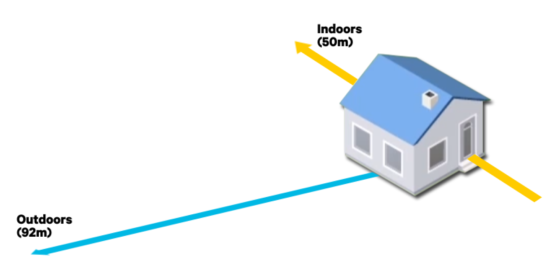Introduction to Broadband and Convergence
How to Choose the Right Communication Bearers
Pros and Cons of WiFi
Originally designed to connect office computers into local area networks (or LANs), Wi-Fi has become the go-to technology for short to medium-range wireless data communication and connection to the Internet.
A WiFi network is inexpensive, easy to install, expandable, offers low latency (better than LMR), and excellent data rates. A wide variety of devices can be made WiFi capable to connect to each other or to the Internet. Many devices such as smartphones have WiFi already installed as standard. To improve their data capability, LMR radios have started to appear with WiFi built-in. Laptops, mobile phones, radios and other devices can use WiFi to connect to business networks and applications.

WiFi hotspots can be added to machinery for off-loading performance data captured during operation. The ability of WiFi to form ad hoc connections means that temporary networks of devices can be created on the fly.
But while WiFi data rates may be impressive, its range is not. A typical configuration might reach no further than 50 m indoors or 92 m outdoors. Extenders, increased transceiver power, and directional antennas can help, but greater range comes at the expense of the data rate. While WiFi can complement LMR to support high volume data transactions, a single WiFi node operates over a fairly short range.

To get WiFi data coverage that matches LMR voice coverage networks of interconnected WiFi nodes – called mesh networks – are sometimes deployed. Meshed WiFi works well up to a certain network size, beyond which network overheads start to impact the data rates. To mitigate these impacts, the network may need substantial redesign (for example, by reducing the number of node inter-connections), which can compromise its resilience and may be both impractical and prohibitively expensive.
Moreover, WiFi is prone to interference, which can ruin its data rate. Bluetooth devices, remote vehicle starters, cordless phones and security cameras share the same radio frequencies as WiFi, all can cause interference. Moving machinery, which gets in the way of signals, or shifting a mobile WiFi hotspot to a blind spot can sabotage the data rate and undercut the reliability of WiFi communications.
Security is an issue for any wireless technology. Until recently WiFi has been more open to hacking then other technologies. In part, this is due to the popularity of WiFi for creating home area networks and public hotspots without turning on any security options or following good security practices.
Yet even with proper set-up and security hygiene, WiFi’s own security features have proved to be vulnerable. For example, its encryption protocols have been successfully hacked on numerous occasions, a situation which the WiFi Alliance (who look after the technology) hopes will be corrected when the latest version called WAP3 is released.
 Radio Academy
Radio Academy




